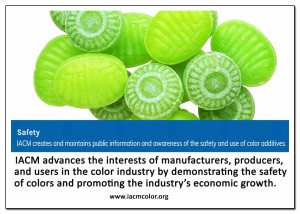 Food Additives & Contaminants, Part A, Chemistry, Analysis, Control, Exposure & Risk Assessment. 2017 March 23.
Food Additives & Contaminants, Part A, Chemistry, Analysis, Control, Exposure & Risk Assessment. 2017 March 23.
Using complex statistics and a database of product labels, rather than direct measurements, an “estimate of daily intake” of the amounts of synthetic food dyes consumed by the American public was created. Of all products in a particular category, percentages of those with dye were used so that an estimate for the amount of dye consumed in “chewing gum” – for example – could be obtained.
QUOTE: “The assessment was further refined by adjusting the intake to more realistic scenarios based on the fraction of products containing colour within specific food categories.” (Translation: they used statistics not actually based on real measurements)
QUOTE: “The database captures new products launched … It does not capture existing products …” (Because of the Southampton study she is complaining about, many manufacturers are removing food dyes from NEW products. “Old” products such as M&Ms & Twizzlers would not be included in the database Bastaki used, thus underestimating exposures.)
NOTE: Take a look at the full text and see the charts at the end. The first two contain expected amount of each food dye per category. See the category “Bakery” for example. How do you define a “typical” bakery item? How can they possibly divide up each color between all possible bakery items and get a “typical” amount? And what on earth is a “maximum” amount? Another average? Do you know anybody who eats an “average” bakery item? I eat plenty of bakery items without any food dyes … I guess that leaves double the amount for somebody else, right?
QUOTE: “In the Southampton study, children were given a combination of four colours and a preservative at daily amounts equal to each ADI, with totals adding up to very high levels of intake.” (Oops — they are totally wrong here. In that study, the younger group was given only 20 – 30 mg and the older group was given only 24.98 & 62.4 mg. To reach ADI levels, it would take several hundreds of mg.)
QUOTE: “for children to reach the intake assumed in the Southampton study, they would have to consume at least 30 times more foods and beverages daily than the high consumers (95%) and the foods would have to contain four different colours at maximum use levels, a clearly unrealistic scenario.” (again, totally untrue, based on a misreading of the Southampton study, which you can see here.)
NOTE: They follow this misinformation with a chart for each food dye purporting to show cumulative intake levels for various age groups — in micrograms per kilogram of body weight per day. Considering that a child can get almost 15 mg of Red 40 from one single glass of Powerade Fruit Punch (Stevens 2014), does it make any sense to claim that a 20 kg (44 pound) child will have a “maximum” total intake of only 506 micrograms (1/2 mg) per day?
QUOTE: “Overall, a refined exposure assessment for 12 FD&C colour additives was conducted and demonstrates that food colour use as currently practiced in the US is safe and does not result in excessive exposure to the population, even at conservative range of food consumption and levels of use.”
NOTE: Look at who’s doing the writing of this paper, which has no Conflict of Interest statement:
- M. Bastaki is a Scientific Director, International Association of Color Manufacturers (IACM), whose intention, on their website is to “advance the interests of manufacturers, producers, and users in the color industry.”
- T. Farrell is a Director at Colorcon Inc. which claims to be a “world leader in the development, supply and support of formulated products for the pharmaceutical industry.”
- S. Bhusari is Manager of Ingredient Safety, The Coca-Cola Company
- X. Bi and C. Scrafford are scientists at Exponent, Inc., whose purpose is “to solve engineering, science, regulatory, and business issues facing our clients.”
NOTE: The authors thanked the International Association of Color Manufacturers for funding the paper. Which part of all this doesn’t indicate bias or at least a conflict of interest?
If you go to the abstract on MedLine at the link below, scroll to the bottom and you will see a comment by Lisa Lefferts of the Center for Science in the Public Interest criticizing this study and linked to a Letter to the Editor from her and Dr. Stevenson of Southampton University. He is one of the authors of the Bateman (2004) and McCann (2007) studies.
MedLine || Full Text || Published (Partial) Correction || Get Password




















